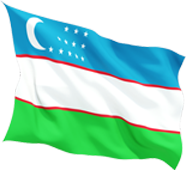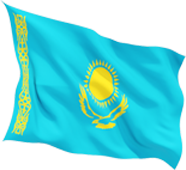Location: The Republic of Uzbekistan is located in the interfluve of the Amu Darya and Syr Darya rivers and covers an area of 448.9 thousand square kilometers. The length of the country from west to east is 1425 kilometers, and from north to south, it’s 930 kilometers.
Borders: The territory borders Kazakhstan to the north and northeast, Kyrgyzstan and Tajikistan to the east and southeast, Turkmenistan to the west, and Afghanistan to the south. The total length of the state border is 7090.12 kilometers, with 143 kilometers bordering Afghanistan, 2,356.31 kilometers with Kazakhstan, 1,476.12 kilometers with Kyrgyzstan, 1,283.2 kilometers with Tajikistan, and 1,831.49 kilometers with Turkmenistan.
Relief: In terms of natural geography, Uzbekistan is one of the most favorable regions in Central Asia. Its territory is a combination of flat and mountainous relief. The majority of Uzbekistan’s territory consists of plains (about four-fifths of the total area). One of the most significant plains is the Turan Plain. In the east and northeast of the country, there are extensions of the Tian Shan and Pamir mountains, where the country’s highest point is located at 4,643 meters. In the northern central part of Uzbekistan lies one of the world’s largest deserts, the Kyzylkum, and to the west is the Karakum.
Geological Structure and Mineral Resources: The country’s subsoil contains reserves of natural gas, brown and hard coal, gold, copper, tungsten, bismuth, and oil deposits have also been discovered.
Climate: Uzbekistan has a sharply continental climate. It is characterized by significant temperature fluctuations between day and night, as well as between summer and winter. The temperature difference depending on the season is quite considerable. The average temperature in January drops to -6°C, while the average temperature in July rises to +32°C. The annual precipitation in the plains ranges from 120 to 200 mm, while in mountainous areas, it can reach 1000 mm. Precipitation levels are low, so agriculture relies heavily on irrigation.
Inland Waters: The two largest rivers in Uzbekistan are the Amu Darya and the Syr Darya. The total length of the Amu Darya is 1,437 kilometers, and the Syr Darya is 2,137 kilometers. Most of Uzbekistan’s rivers dry up along their course, with only the Amu Darya and Syr Darya reaching the Aral Sea.
Soils and Vegetation: Plains are dominated by desert vegetation, while in the mountains, there are steppes, forests, and alpine meadows.
Wildlife: The country’s fauna is diverse. The rare Saiga antelope and a monitor lizard, reaching a length of 1.5 meters, are found in the desert. Snow leopards and rare mountain goat species inhabit the mountains.
Mountain System: Mountains and foothills make up about one-fifth of the country’s territory. In the east, there are middle and high mountain forms of relief, including the Western Tian Shan (Ugam, Pskem, Chatkal, Kuramin) and Pamir-Alai (Zeravshan, Turkestan, Gissar, Kugitangtau, Baysuntau) ranges. To the south and west, these gradually descend and transition into plains. Large valleys are situated between the mountains, such as Kashkadarya, Surkhandarya, Zeravshan, and Samarkand. The largest intermountain depression is the Fergana Valley, which stretches 370 kilometers in length and reaches 190 kilometers in width. It is framed by mountain ranges on three sides and is open only to the west.
Natural Resources: Uzbekistan possesses significant industrial and mineral resource potential, unique agricultural resources, considerable volumes of semi-finished products obtained through processing, and rich natural resources, supported by developed infrastructure. Modern exploration of mineral resources is associated with the development of rich deposits of noble, non-ferrous, and rare metals, all types of organic fuel (oil, natural gas, and gas condensate), brown and semi-coking coal, oil shale, uranium, various types of construction raw materials. Uzbekistan’s subsoil is home to a wide range of minerals, including around 100 types of mineral resources, of which 60 are already being used in the national economy. Uzbekistan ranks among the world leaders in confirmed reserves of gold, uranium, copper, natural gas, tungsten, potassium salts, phosphorites, kaolins, and other construction raw materials. For instance, in terms of gold reserves, the country ranks fourth globally, and in terms of gold production, it ranks seventh. It ranks tenth to eleventh in copper reserves and seventh to eighth in uranium reserves, with similar rankings for their production. The existing reserves of mineral resources not only sustain the current mining complexes for the long term but also enable the expansion of capacities and the reinitiation of the extraction of several crucial minerals such as gold, uranium, copper, lead, silver, lithium, phosphorites, potassium salts, fluorspar, wollastonite, agrochemical ores, and others.











